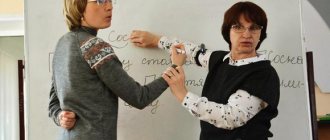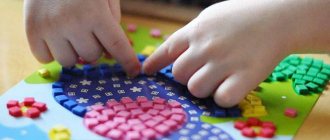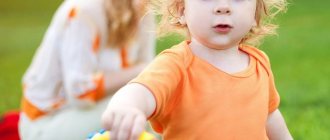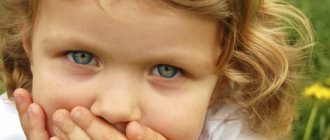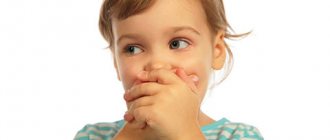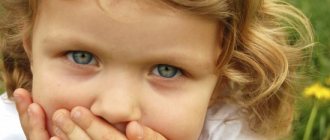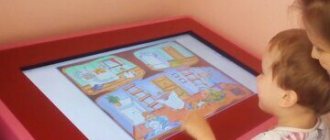The method of forming a language system (MFSL) for non-speaking children is used in working with various types of speech delay, such as: alalia, speech development disorder, stuttering, intellectual development disorders, Down syndrome, RDA. It was developed specifically for children with speech disorders of various natures, by Tamara Novikova-Ivantsova.
MFNP for non-speaking children reflects effective ways to solve the problem. These skills will be useful for both practicing speech therapists and beginning specialists. In addition, the material is presented in an accessible way for parents who want to conduct classes with their children on their own; this option will be an effective addition to the main therapy.
Early child development:
- Shichida method
It may seem that the complex is very simple, but in this case it is the consistency of the work that is important.
Principles of the technique
Tamara Novikova-Ivantsova is the author of methods for studying and correcting speech defects in children.
Tamara Nikiforovna is an Honored Teacher of Russia, a speech therapist with thirty years of experience in working with systemic speech pathologies in children.
Her method contains recommendations that are valuable not only for professional speech therapists, but also for beginners. In addition, the information in the manual is presented in accessible language, which will also be useful for mothers and fathers planning to study with their baby at home.
It is worth identifying general principles , which at first glance may seem too simple. But the whole essence of the technique lies in the systematic implementation of them .
For a child to be ready to speak, it is necessary:
- create an environment favorable for speech development;
- conduct training sessions on speaking practice on a regular basis.
From word to phrase, book 2, Novikova-Ivantsova T.N., 2010
From word to phrase, book 2, Novikova-Ivantsova T.N., 2010. This is the second book on developing the ability to use phrases in children with severe speech pathology. The first book is devoted to composing a sentence from two words: subject and predicate. We continue to work in this direction with a subgroup of children or individually. In the second book we add the category of number, which is the first to be formed from all grammar in normative ontogenesis. The singular and plural are practiced in comparison with each other. Each page of the book must be studied in accordance with the speech capabilities of the subgroup and the personal characteristics of each child. Guidelines. We suggest working step by step: first the speech therapist (hereinafter L.), why the child (hereinafter R.). For example, page 3: a) L: “Show me where the mice are.” R. places his index finger on the desired picture, and then covers it with a chip. L. names successively “chickens”, “children”, “cats”, “dogs”, “roosters”. R. shows the desired picture and covers it with a chip. As a result, all the pictures are covered with chips. b) We continue working on page 3. L. moves one chip to the side so that the picture is visible and asks: “who?” R.: “mice.” The answer is correct, and the speech therapist suggests removing the chip. If a child has difficulty forming the plural, the speech therapist pronounces the noun associated with the child. This is how the entire page is processed. As a result, all the chips are removed. The speech therapist circles all the pictures with his hand and says: “they go.” c) Same page. L.: “show and name.” R. puts his finger on any picture and says (independently, in conjunction with a speech therapist, or reflected), for example, “mice.” L. adds: “they are coming.” The picture is covered with a chip. This is how all the pictures are processed, and in the end they are all covered with chips. d) Page 3 again.
Download the e-book for free in a convenient format, watch and read: - fileskachat.com, fast and free download.
Below you can buy this book at the best price with a discount with delivery throughout Russia. Buy this book
How to open a file
Copyright holders
- pdf - Yandex.Disk.
Publication date: 08/20/2019 09:39 UTC
speech :: Novikova-Ivantsova :: 2010
See also textbooks, books and educational materials:
- Game technologies in the process of preparing children for school, Kazakova G.M., Kalmykova E.V., 2010
- Lectures on metaphysics, Heidegger M., 2010
- Dictionary of live spoken English and American slang, Belov N., 2010 - English-Russian, Russian-English dictionaries
- OGE 2022, Spanish, grade 9, Codifier, Project
The following textbooks and books:
- Entertaining cards, Leo, Reading words-syllables, Teaching literacy, Shtets A.A., 2017
- Alphabet Studies, a book for teachers and parents, Volina V., 1999
- General underdevelopment of speech in preschool children, Rudakova N.P., 2013
- From word to phrase, book 3, Novikova-Ivantsova T.N., 2011
Previous articles:
- Education in a new way, Svetlova M.
- School, everything will work out, a navigator for parents from a child psychologist, Lutkovskaya E.
- Developing coherent speech in children 5-6 years old with OHP, Arbekova N.E., 2013
- Theory and methods of education, educational manual, Parinova G.K., Tsikunova O.V., 2009
<< Previous articleNext article >>
Factors influencing the quality of a child’s speech development
The child’s psyche, the level of his physical activity, and an environment conducive to communication are the three most important conditions for successful speech development.
It is worth considering that the development of speech skills is influenced by the state of the baby’s psyche . The ability to speak depends on how developed his thought processes, memorization, concentration, etc. Problems of varying levels of complexity can be solved by specialist doctors, from a speech therapist to a neuropsychologist.
The development of speech is also inextricably linked with the physical activity that the child experiences every day. Physical activity improves blood circulation and saturates the brain with oxygen. It is especially useful for children with speech delays to go to the pool and do gymnastics.
Immersion of the child in a speech environment plays a major role in the development of speech abilities . To create the necessary conditions around the baby
- communicate with him on various topics,
- use different words
- change your intonation
- speak clearly and clearly, pronounce your actions,
- Show your child illustrations or three-dimensional figures, commenting on them verbally.
One of the key tools for launching speech mechanisms according to the IFP is singing.
So combine business with pleasure. Listening to songs in your native language performed by your mother or close relatives has a beneficial effect.
This activates the speech mechanism, establishes a system of rhythm and tact, and phonemic perception of words. Therefore, one of the key elements of MFNS is music , which in one way or another affects the state of mind, can cause a change in mood and accompany it with speech.
Stages of speech development according to MFSL
Screaming, babbling, and babbling are the most important stages in the development of a child’s speech.
Scream
This is a reflexive reaction of a person to the influence of external stimuli . A child screams when he is uncomfortable, when he experiences pain, hunger, thirst, or any unpleasant sensations. A scream is characterized by ringing and loudness, a short inhalation and a long exhalation, during which the sound is produced.
Children who have some abnormalities in the nervous system make either a deafening sound or replace it with quiet exclamations with intermittent sobs. However, there may not be a scream. Most often, the period of active “screaming” ends after 2 months from the date of birth of the child .
Booming
This is a long and singsong extraction of vowel sounds . Moreover, it can often be accompanied by the reproduction of consonants. Here the child already picks up the parents’ intonation, tries to accompany it with his own sounds, he wants to control his speech apparatus in order to convey the idea. But the device is not yet ready for this, since it is in a transitional state.
The parent’s task is to actively maintain an emotional connection with the child, communicate with him using intonation, its tonality, rhythm, but do not forget about words.
Babbling
At the age of five to nine months, the child’s speech development moves to a new stage of babbling . This is the repeated repetition of the same word or sound combination, syllable, which can form elementary words. For example, “ma”, “pa”, “dya”, and others. While the child learns to perceive certain expressions by ear, the depth of exhalation is formed, which the baby learns to control. At 10 months, some children can already form words from the same syllables - “mother”, “uncle”, “daddy”, etc.
At one year of age, children have about 10 words or more in their luggage . It is noteworthy that girls learn new words faster.
By the age of one and a half years, children are already able to pronounce some short phrases.
It is possible that at any stage the child will experience a disturbance or delay . This leads to deformation of the speech system and difficulties, causing concern among loved ones. To restore the sequence in the stages, it is recommended to follow the Novikova-Ivantsova method and go through all the necessary levels of screaming, humming and babbling in turn. Then it will be possible to pronounce sounds, syllables, words and entire phrases.
Basic principles of the INF
This technique is based on the ontogenetic principle of speech development, which consists of several important stages:
Scream
The appearance of a cry is associated with human reflexes and it appears as a result of the action of certain external stimuli. Basically, these are conditions that cause discomfort in the child, such as pain, thirst or hunger, etc. In accordance with the norm, the cry should be loud and sonorous; it is also distinguished by a short inhalation and a long exhalation. In children with a disorder of the nervous system, the cry is either too deafening or too quiet and more like sobs. It may also not exist at all. Typically, the crying period lasts up to two months from birth.
Booming
Gulenie is a sing-song pronunciation of drawn-out vowel sounds, which is often combined with consonants. Intonation expressiveness is the main factor that parents should pay attention to during this period. This is due to the fact that the child’s speech apparatus is preparing to begin to pronounce sounds, remembers intonation, and tries to control it. The child must catch the parent’s speech and respond to it with laughter or a set of sounds. At this stage, his emotional connection with the parent is important.
The significance of the technique
Novikova-Ivantsova’s development not only helps children speak, it serves as a necessary tool in the hands of speech therapists who study disorders in the field of word structure, tempo, timbre, rhythm, and sound production in general.
Her manual includes a collection of techniques that are aimed at correcting speech-auditory perception - in particular - and eliminating problems of the speech apparatus - in general.
According to the International Nuclear Law Framework there are several stages:
- preliminary , where classes are conducted on the sense of rhythm;
- direct practice , during which exercises are performed to develop memory, motor skills, pronunciation of vowels, study of syllables, words, songs with accompanying visual material.
More detailed and comprehensive information about working with non-speaking children can be found in the video material of the author of the methodology in two parts.
Part 1
Part 2
NEW Webinars 2021
As a result of the study, you will have specific instructions and practical techniques for increasing the effectiveness of speech development in non-speaking children.
Minimum theory, maximum practice.
Another argument in favor of starting training now. Tamara Nikiforovna is an active specialist with a very heavy administrative workload. Therefore, it is not possible to conduct online webinars.
Video recordings of past lesson webinars No. 1-76 can be purchased in blocks (this is approximately 25 webinars) or in blocks of 9 or 3 webinars. The material is all the same, the only difference is the price, the blocks are a little cheaper.
Novikova-Ivantsova Tamara Nikiforovna - author of the method, Honored Teacher of Russia, Candidate of Economic Sciences, Director of the State Budgetary Educational Institution Special (Correctional) Primary School-Kindergarten Type V No. 1708 for children with disabilities, Moscow. The presented methods have been tested with children who have a complex structure of the defect with leading speech pathology, and have been finally tested since 2000. in GBOU No. 1708 of Moscow.
The materials from the Logosystem.ru project are useful for both professional speech therapists and parents of children.
The initial stages of work are available to every parent.
The methodology is based on the author’s personal experience of more than 30 years.
The material from lesson webinars No. 1-76 should be used if the child is capable
produce sounds A, O, U, I, etc. for a long time and randomly.
If this is not the case, then you need material from the preparatory stage of the RMIOYA webinars 1-5
| What will I get? | Yes, there is classical, traditional speech therapy. But for some reason, after the classics at the age of 5-9, parents bring non-speaking children to Novikova-Ivantsova TN and the children begin to speak. The speech therapist receives a tool for guaranteed achievement of a positive result (the maximum possible individual ceiling for speech development in a child, depending on the diagnosis). Every parent can do the work of the initial stages. You can verify this here. Just FOLLOW THE INSTRUCTIONS EXACTLY and you will definitely see your child’s progress. | |||
| Why does the method work? | A detailed answer is given in the audio recording “Speech and language phenomena.” Briefly: The technique creates conditions for the natural speech development of a child, and is developed based on language codes and ontogenesis. The method may not be perfect, but it gives results. | |||
| Why here? | Video clips The most delicious thing, of course, is in the video recordings of lesson webinars, there is systematized and prepared information on a silver platter, already available for a fee. Recordings of the first 6 webinars are publicly available | |||
| How will I master the material? | The video shows the next lesson with the child and dictates a lesson summary with detailed instructions. Plus, you get access to specially recorded melodies, used symbols and a video recording of the webinar, i.e. You receive all the visual material necessary to work with your child in electronic form for downloading and printing. The material of each lesson needs to be worked through with the child 2-3 times during the week, the more, the better. In the recording of the next lesson, we discuss the problems of working with children from the previous lesson and give a new lesson on working with a child for the next week. | |||
| I want to purchase recordings of lesson webinars Where to begin? | Recordings of RMIOY webinars 1-5 of the initial preparatory stage. This material should be used where the child does not yet have voluntary sounds. This is the very beginning of the work. If your child has arbitrary sounds, and you want the most step-by-step guidance in the work, then take the recordings of Lesson Webinars 1-76. | |||
| HOW and what to buy? | Comments on the materials of the methodology and a guide to the site link If you want to make sure that the payment will be successful and your money will not be lost, especially with cards from non-Russian banks, then there is PAYMENT TEST for 5 rubles | |||
| How can you save money? | It is more profitable to buy 9 or more paid lessons. At the same time, you receive a discount of 10% on the entire order amount. | |||
